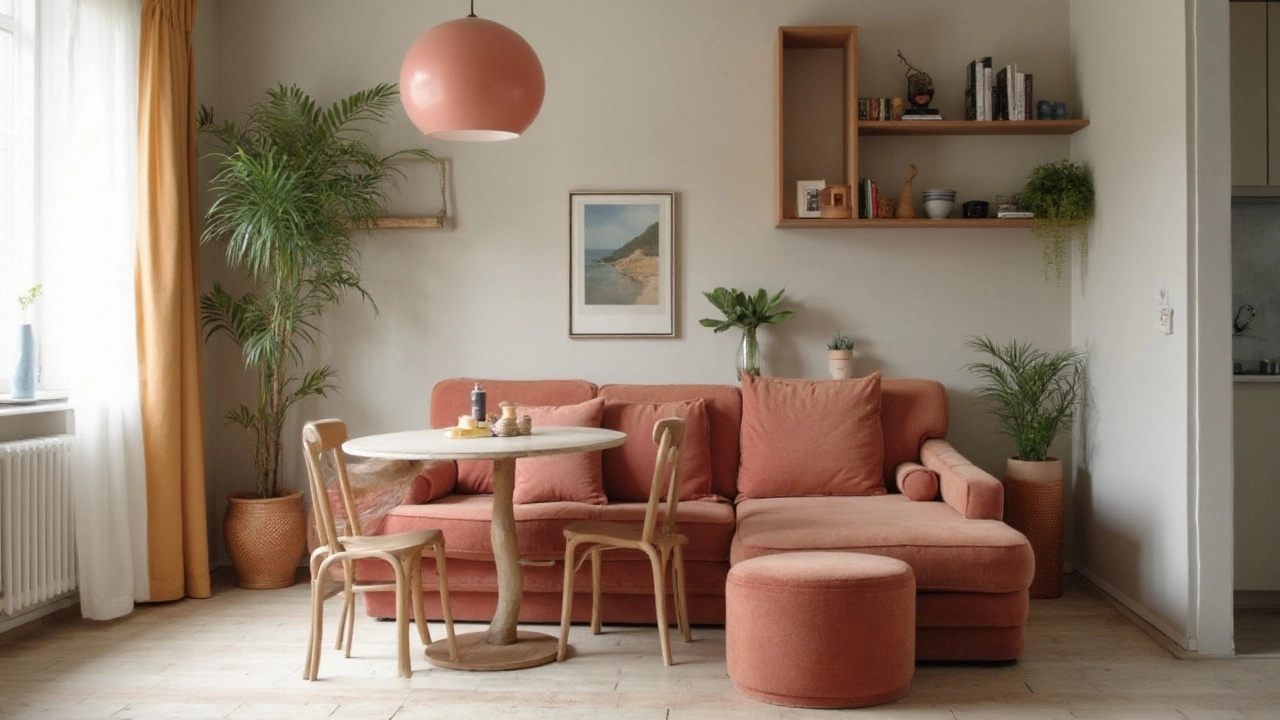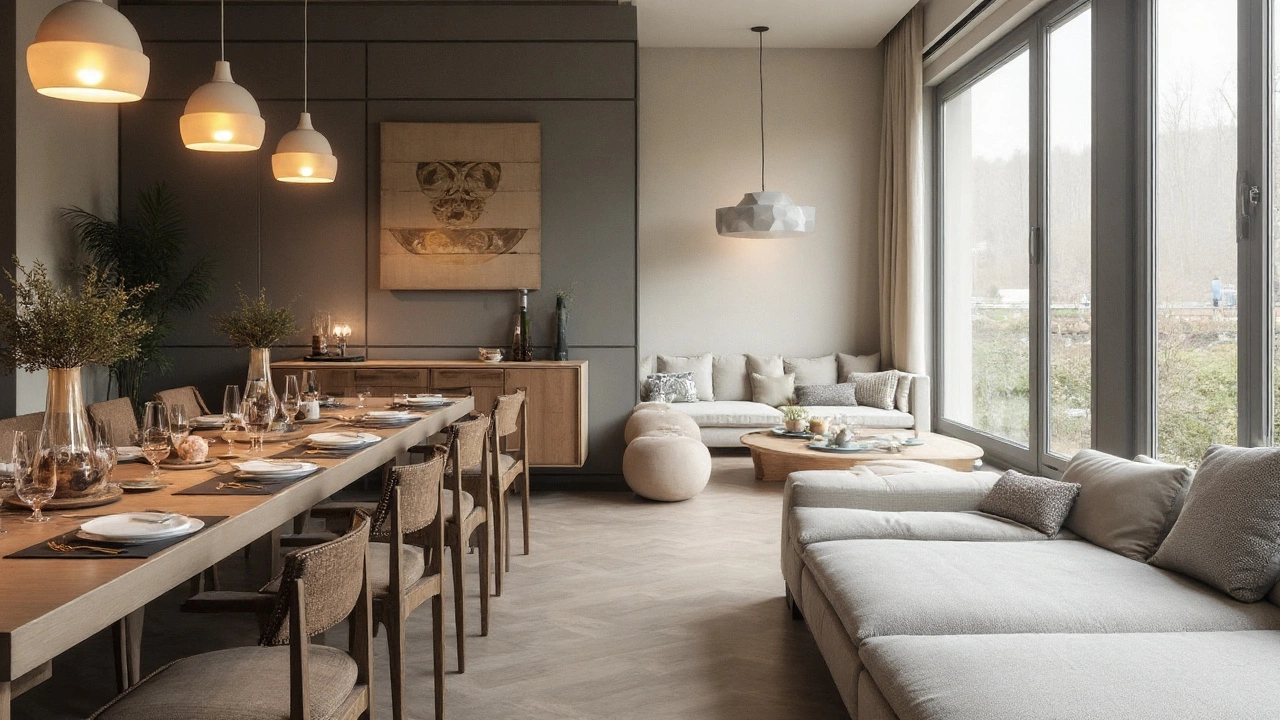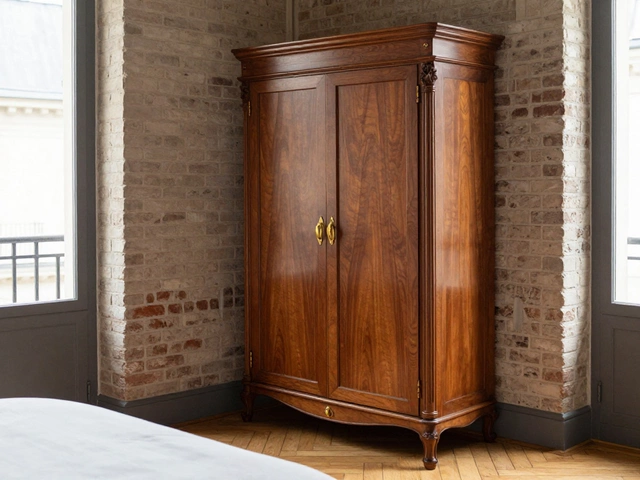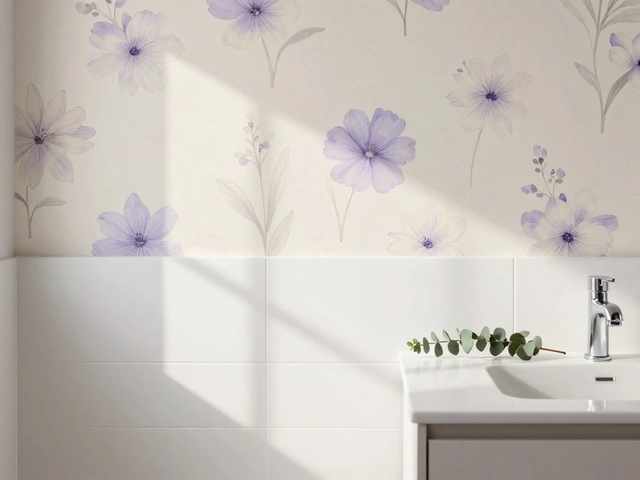
Who said the dining room is sacred ground for tables and chairs only? People are restless, and so are our homes. We want more comfort, more ways to relax, and for spaces to work double-time, especially as living costs keep squeezing square footage. Picture this: you’re nursing your Saturday coffee on the softest couch, bathed in sunlight, just a few feet from your favorite dark wood dining table. Is that weird—or totally genius? Turns out, putting a couch in your dining room is not some bizarre home design crime. It’s starting to catch on for both practical reasons and style points, with a growing trend of mixing relaxation zones and eating areas, whether you’re hosting close friends or just unwinding after a long day (like this writer, usually with my cat Jasper curled up nearby).
Why Choose a Couch for Your Dining Room?
So why do some people shove a couch into their dining area? Sometimes, it’s about squeezing more use out of every square foot. Open-plan living is big right now—the kitchen, dining, and living room all flowing into each other. Maybe your dining space is awkwardly big, or maybe you rarely use it for eating but don’t want dead space. Placing a couch there immediately transforms the vibe: now you have a casual hangout zone, a reading nook, or the best seat for watching your partner experiment with brunch recipes. It shifts the energy from stiff dinner parties to inviting, relaxed gatherings.
According to a 2024 survey by the National Association of Home Builders, 36% of homeowners have converted at least one traditional area (like a formal dining room) into a more flexible use space like a library or lounge. If your family is anything like mine, you eat at the kitchen counter as often as at the dining table, making that prime square footage up for grabs. There’s also the purely aesthetic side: a soft, plush couch can break up all the hard surfaces of a dining set, add texture, color, and warmth, and help define zones in an open layout. Want to keep it formal? Try a sleek, modern loveseat in rich velvet. Feeling bold? A patterned sectional feels laid back and bold.
Another cool point: a couch in the dining room might be perfect for parents who want somewhere to relax while their kids do homework at the table, or for pet owners like me, who love sprawling out with a good book while Jasper sprawls out somewhere he knows he shouldn’t be. Having that extra comfort spot keeps everyone happier and the vibe more relaxed.
How to Choose the Right Couch: Size, Shape, and Style
Before you drag your living room’s biggest, comfiest beast into the dining room, a reality check: scale matters. A bulky sectional might swallow up the space, while a too-tiny bench won’t give you any of that ‘kick back and hang out’ magic. Check your room dimensions first. Leave at least 3 feet between the edge of your dining table and any soft seating, so people aren’t tripping over tails—human or feline.
If you’ve got a big, squared dining room, go for a full-sized sofa along one wall or float it opposite the table. For apartments or narrow dining nooks, a slim loveseat, bench, or even a settee has that cozy, café feel without dominating the room. Pick materials and colors that either complement or sharply contrast your table for deliberate impact. Leather, velvet, and even performance fabrics bring durability—no one wants to cry over spilled Cabernet. If you eat often in the dining room, darker fabrics and removable covers are your friends, trust me.
It’s handy to sketch out possible layouts or even use masking tape to outline the couch’s footprint before buying. Pay attention to armrest height—too high and it’ll butt heads with buffet tables or hutches; too low and it looks lost. Modular sofas, which you can reconfigure, work great for changing things up, especially if your dining needs fluctuate. For more formal homes, look for elegant, structured designs. But for a family zone, deep cushions and relaxed silhouettes make the space feel instantly more approachable.
Colors and fabric patterns matter, too. Neutrals blend in, but a pop of color can create a visual anchor. If the couch backs up to a window, add some throw pillows that tie into your curtain or rug colors. For durability info, check out the stats here:
| Fabric Type | Durability (Years, avg.) | Maintenance Level |
|---|---|---|
| Leather | 10-15 | Low to Medium |
| Microfiber | 5-10 | Low |
| Velvet | 4-8 | Medium |
| Linen | 3-6 | High |
Picking the right couch for your dining room is a game of balance: big enough for comfort, small enough to fit, and styled so it looks intentional, not like a leftover from a college apartment.

Design Tricks: Blending a Couch with Dining Room Furniture
Alright, so you found your dream couch. Now comes the fun—making it look like it belongs. The trick is to create flow but not sameness. If your dining table is dark, go for a lighter, contrasting sofa. Or, if you have a marble-topped table, play it off with a luxe velvet couch in a jewel tone. Unify the look with matching or coordinating throw pillows on the couch and chairs.
Rugs are the unsung heroes here—a big area rug under both food and lounging zones pulls the room together visually. If you have a rectangular table, a round or oval rug under the couch can help soften the geometry and break up the lines. Lighting also makes a difference; a big pendant light or chandelier over the table, paired with a floor lamp or sconces by the couch, lets you dial in different moods for eating, reading, or napping (Jasper’s favorite, by far).
Art and decor add more personality. Hang a bold piece above the couch, or use floating shelves for books and plants to bridge the eating and relaxing spaces. If you’ve got the space, tuck a slim console table behind the couch for drinks or snacks during game night. Remember, mixed metal finishes—like brass and matte black—look curated, not chaotic, when sprinkled through both zones. Keep visual clutter down by stashing extra blankets or games in a lidded basket or ottoman, so it feels tidy enough for guests, but still lived in.
Plants are another subtle anchor between the two spaces. A potted tree by the couch can soften corners and help break up long, boring walls. Or if you cook a lot, try an herb garden on the dining room window ledge. Basically, the goal is to create purposeful overlap, so guests aren’t confused about where to sit or what the room is for.
Couch Placement: Best Layouts for Different Dining Room Sizes
Let’s break down some practical layouts, because the wrong spot for your new couch is an invite to stubbed toes or awkward maneuvering with hot dishes. For square dining rooms, place a couch along a wall parallel to the dining table, leaving clear walkways between doorways and the eating area. This works if you actually “zone” the room, so each function—hangout versus eat—gets its space.
If you’ve got a rectangular room, try placing the couch on one of the shorter ends, almost like a bookend. Sectional sofas work if you want to wrap company around the table (think long, Sunday brunches). In narrow dining rooms, a bench-style couch or banquette against the wall serves double duty: makeshift seating for the table, plus a spot to lounge when nobody’s eating. This is a great fix for small apartments or older homes with less open space.
If you’re blessed with an open-concept set-up, use the couch as a “soft wall” to separate living and dining zones. Floating the couch with its back to the dining table creates a subtle divider without closing off the view. Modular or L-shaped couches help define these boundaries too. Just always leave enough clearance for chairs to push out and people to get up—crowded walkways instantly kill the chill, welcoming vibe you’re after.
For multi-functional family rooms—like one where dining, crafting, and chilling all happen—try an arrangement with the couch at an angle, so everyone can join the conversation but the table doesn’t get cramped. And don’t forget lighting: make sure each zone has its own source, so you don’t end up stuck in either a gloomy nook or blinding spotlight.

Pros, Cons, and Real-Life Inspiration
People love multitasking, so it’s no shock that combining a couch with your dining room comes packed with perks. Pros? More seating, extra comfort, and a high-traffic room that feels inviting for more than just dinner time. It’s perfect for keeping the family together or wowing guests with an unexpectedly chill zone. Kids can lounge on movie night while you’re setting the table. Friends can stretch out with a glass of wine. Plus, if you’re working from home, it’s another cozy spot for laptop time—Jasper likes to “help” by walking on the keyboard when I’m using the dining room setup like this.
Here’s the flip side: couches add bulk. Tight dining rooms might suddenly feel crowded and hectic. Not everyone likes mixing the practical with the cozy right where food’s involved. If you love formal dinners or hate cleaning upholstery, maybe skip the couch or choose stain-resistant fabric. Allergies are worth considering too—upholstered seats = dust traps, especially with pets that shed. (Ask me how many times I’ve used a lint roller on Jasper’s “throne.”)
But don’t just trust some blogger’s word. Check out Instagram: #DiningRoomSofa has been climbing; about 11,000 posts show homes worldwide blending plush lounging with artful dining. Take British designer Sarah Beeny, who featured a plush blue velvet couch in her family’s dining room—she says it brings her crew together for everything from quick bites to late-night board games. On Pinterest, searches for ‘sofa in dining room’ spiked by 28% just in spring 2025 alone.
Bottom line: the old rules about furniture placement are fading fast. Whether your dining room doubles as a second living space or you’re just after a spot for the cat to nap while you sip coffee, adding a couch turns “unused” into “beloved.” The best homes are the ones you actually live in—and sometimes, that means breaking the so-called rules and giving yourself permission to do it your way. Who knows? Putting a couch in dining room could be the change you never knew you needed.



